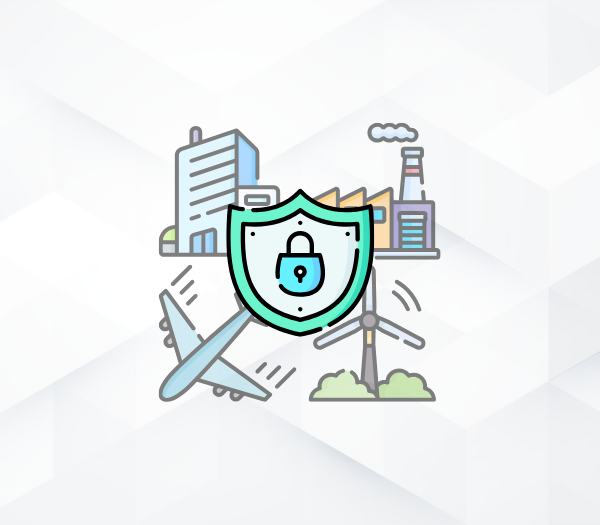
Top 5 Tips on Sector-Specific Cyber Security Training
Cybersecurity affects every sector
Cybersecurity has become a core part of business responsibility and competitiveness for every sector. Whether it’s healthcare, energy, transportation, finance or public administration, each sector has its own threat landscape, vulnerabilities, and maturity level.
Today, business leaders and CISOs face the challenge of designing training programs that consider the specific characteristics of their sector, not just general best practices. The following five tips will help create strategically thoughtful, effective and sector-specific cybersecurity trainings.
1. Starting with a Sector-Specific Threat Landscape
Different sectors face different threat actors and motivations. The financial sector is often targeted by professional cybercriminals seeking direct financial gain. The energy sector, on the other hand, is increasingly under attack from state-sponsored groups aiming to disrupt services or test societal resilience.
In healthcare, the primary threat is the misuse of patient data or service disruption. In transportation, cyber incidents can directly impact physical safety.
Strategic training should therefore be based on the specific threat landscape of each sector. Before designing a training program, leaders should ask the following questions:
- What attack vectors have been most commonly used in the sector over the past 12 months?
- Do the threats come mostly from external actors (e.g., ransomware groups) or internal sources (e.g., human error, workplace accidents)?
- What is the sector’s risk tolerance? Should the priority be on data availability, confidentiality or integrity?
Practical step:
Conduct a sector-specific threat analysis (e.g., using the NIS2 Directive risk assessment framework) before developing training content. This ensures the training is tied to real-world incidents, not hypothetical scenarios.
2. Mapping Vulnerabilities
Traditional training approaches often focus on IT employees, but the real vulnerabilities stretch far beyond the technical department.
For example:
- In healthcare, the weakest link may often be third-party device manufacturers or maintenance partners.
- In transportation, risks could stem from physical access or tailgating incidents.
- In energy, industrial control systems (ICS/SCADA) are key, and users may not always be aware of cybersecurity best practices.
Sector-specific training should expand participants’ understanding of how IT assets and business processes are interlinked. Training should focus on:
- Identifying and prioritizing critical assets,
- Understanding asset dependencies (e.g., cloud services, suppliers, partners),
- Mitigating risks both technically and organizationally.
Practical step:
Incorporate simulations and exercises based on sector-specific cases into training. For example, the STRATEX platform enables the creation of realistic scenarios where participants can make decisions based on their organization’s infrastructure and critical assets.
3. Measuring Cybersecurity Maturity Across Skills, Awareness and Perceived Risks
The success of a sector-specific training program doesn’t just lie in knowledge sharing, but in increasing maturity across three dimensions:
Skills
- How well can employees respond to incidents?
- Can they detect and escalate suspicious activity?
- Do they have the practical tools to ensure business continuity?
Awareness
- Do employees understand why and how cybersecurity is part of their role, not just an additional task?
- How often do they participate in training?
- Does their behavior change measurably after training?
Perception
- How do leaders and employees perceive cybersecurity?
- Is it seen as part of risk management, or just an IT issue?
- Are cyber incidents seen as learning opportunities or reputation threats?
Practical step:
Create a cross-sector benchmark model to assess maturity growth over time.
4. Investing in Leadership and Decision-Maker Training
In many sectors, strategic cybersecurity decisions are made at the board or executive level, but decision-makers may not fully understand the business risks associated with technical information.
A crucial component of sector-specific training should be raising awareness among leaders, not just providing them with technical expertise. Training for leaders should focus on questions such as:
- How do technical risks translate into business risks?
- How do you assess the return on investment (ROI) for cybersecurity (ROI vs. ROSI – Return on Security Investment)?
- How do you ensure cybersecurity risk management is integrated into the broader risk management framework (GRC)?
Practical step:
Incorporate strategic simulations where leaders have to make decisions during a crisis. For example, should ransomware be paid? How should the company communicate with clients and the media? How do you ensure service recovery? These simulations give decision-makers an understanding of how technical and business priorities can conflict.
5. Making Training a Continuous Effort
One-time training sessions are often cheaper and easier to organize, but the real value comes from consistency. The cybersecurity environment changes monthly, which means training should be cyclical and adaptive.
When creating sector-specific training programs, think of them as part of an ongoing development cycle:
- Assess maturity and risks.
- Set goals and update the training plan.
- Run simulations and exercises (e.g., using STRATEX).
- Provide feedback, measure, and improve.
When a company can create a culture where each new incident (whether internal or industry-wide) becomes a learning opportunity, cybersecurity is truly integrated into business operations.
Practical step:
Create an action plan after each training session where each participant and team identifies three specific changes they will implement in their work. This can be measured at the beginning of the next cycle to ensure real learning and change.
